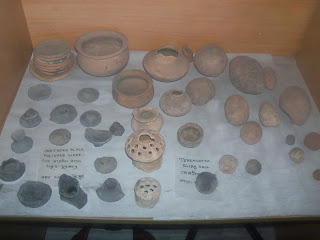Archaeology has still not managed to answer the question, ‘When, and why, did settlements and trade and industry commence in the Ganges Basin?’
The Basin is part of the Ganges, Brahmaputra, Meghna basin that drains about 1 million or so square kilometres of Tibet, Nepal, India and Bangladesh, though, of course, throughout the past 4,000 years no one would have recognised those political divisions, apart perhaps from Tibet, being as all were a part of what was known as ‘North India’.
The Basin is between 350 and 700 km wide and stretches from where the 2,500km long river, which originates in an ice cave in the Himalayas 10,300 feet above sea level, reaches the North Indian plain, to the old Brahmaputra and Meghna Rivers in Bangladesh.
Thus far, archaeology has revealed that settlements began about 1,500 BCE, the commencement of what is known as the Vedic Period; so named because of the early form of Sanskrit writing that emerged from the nascent civilisation just as, over the ensuing thousand years, did the Hindu religion grow out of the shamanic and animist traditions of earlier times. So too did the evolutions of that religion, Buddhism and Jainism, which is a kind of hybrid between the other two.
The unanswered question is, were the original settlers refugees from the Harappan civilisation of the Indus which fell into decay in the five centuries before 1,500 BCE, possibly as a result of the early consequences of climate change that produced disastrous flooding in the Indus Valley, or possibly in the face of the aggression of Aryan nomads, who arrived from Iran seeking better pastures for their herds?
It could even be a fusion of the two. Harappan culture, named for the city of Harappa, the first discovered, was urban, Aryan, nomadic. But even nomads, like the early hunter gatherers, recognise, eventually, the need to settle as numbers increase, and open lands diminish.
It seems, from written and circumstantial evidence that a ‘true’ civilisation emerged in the Ganges basin between 1,000 and 500 BCE.
Mahasthangarh, in North Bangladesh, has been identified as the easternmost boundary of that civilisation, although excavators have yet to dig beyond the 3rd Century BCE. It seems likely that habitation will eventually be traced, because of the geography, back to the Stone Age, it leaves open the question of how far the emerging archaeology of Wari Bateshwar might extend that definition.
And, indeed, given the early evidence of industry and trade, recognising the Ganges Delta as the natural outlet for, particularly, South East and Central Asian trade, just how early such settlements as Vikrampur might have been established.
From the collection of Varendra Museum in Rajshahi, there is clear cultural fusion between the emerging religions of the area, and although the next two millennia or so would see occasional upsurges in Brahmanic persecution of the other two religions, it is fairly clear that, where the Ganges Basin found its centre of trade at the Ganges Delta, the rulers and peoples who lived by such trade and industry never tolerated Brahmanic persecutions of the others.
It has been observed that, for a European, appreciation of the role of Brahmin may be best understood by examining the limited knowledge they may have of Druid culture in the Aryan migrants into Europe. And it certainly appears that those nomadic migrants moved both south east into India and West into Asia Minor and Europe.
Raw materials traded out of the Basin from 1,000 BCE include agate, crystal, carnelian, jade, amethyst, bloodstone, flint, quartz, marble, lapis lazuli, ivory, shells, gold, silver, copper and iron. Most of which have emerged, in sizeable quantities, from the excavations at Wari Bateshwar.
We can also add Wari Bateshwar to the list of sites with evidence of iron smelting and working, also the working of silver, not least in the coining. Pottery crucibles too, for smelting jewellery, and waste chips of semi precious stones, as well as tools for working them, reveal the manufacture of jewellery.
It is equally clear, within the surrounding areas, that trade in many such raw and manufactured materials was common, from at least the middle of the first millennium BCE. And it is probably no coincidence that the first of the Mauryan Emperors, in the 3rd Century BCE, built the Grand Trunk Road from Patna, towards the western end of the Basin, to the Indus valley, to facilitate such trade both in the region and beyond.
The Ganges basin, much of which is now in Bangladesh, almost certainly has many of the secrets of its early development yet to give up. Such secrets are likely to be slower in being revealed in Bangladesh than in India, simply because of lack of resources, with, perhaps, a touch of lack of motivation, in an Islamic state that seems unaware of the Holy Prophet’s injunction, ‘Seek ye knowledge, even unto China’.






Nice Post at all...Rural Bangladesh
ReplyDelete